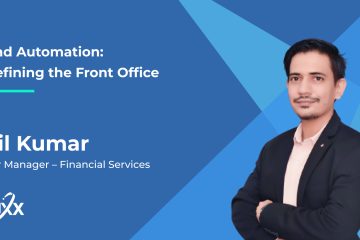Most companies believe their systems are efficient due to operational blindness and complacency with the status quo. In reality, inconsistent data, manual reconciliation, and delayed processing times lead to costly errors and regulatory penalties. For example if your existing post-trade system is built on .NET architecture, it is likely prone to operational bottlenecks and reliant on manual processes to cover gaps. This will make it difficult to support new asset classes and instruments, causing inefficiencies in both cost and performance and inhibiting business growth.
Challenges in Middle and Back-office Operations
While front-office innovations capture headlines and budgets, the true backbone of any financial institution lies in the often-overlooked middle and back-office operations. These are the unsung heroes ensuring seamless post-trade processes, regulatory compliance, and accurate reporting. However, their efficiency is hampered by outdated technologies and siloed data, creating bottlenecks and increasing operational risks.
Additionally, systems struggle to handle large volumes of trades, resulting in delays more than crashes, but in trade settlement and reconciliation reducing these delays can have significant upside. These issues diminish the overall agility of the firm and impede decision-making – highlighting the critical need for modernizing middle and back-office systems.
Key Areas of Focus
Even when an organization wants to improve their back office operations, where do they start to get the most impact? In most cases they make a “Value vs Effort” matrix, then focus on the quadrant that promises quick wins of low hanging fruit (the High Impact, Low Effort), then forget about the rest.
But if you’re truly trying to maximize VALUE, these are the really High Impact Areas that most companies can capitalize on:
Adding Straight-Through Processing (STP) to Post Trade Systems
STP is the cornerstone of post-trade automation. By enabling transactions to be processed without manual intervention, STP reduces errors, accelerates settlement times, and improves operational efficiency. This seamless integration between trading, settlement, and reporting systems ensures that data flows uninterrupted across the entire trade lifecycle.
Robotic Process Automation (RPA) goes one step further, deploying software robots to handle repetitive, manual tasks such as data entry, transaction matching, and exception handling. These bots work tirelessly, ensuring accuracy and consistency while freeing up human resources for more strategic roles.
Modular, Scalable Architecture
Scalability is fundamental to modern systems, ensuring they efficiently adapt to both the scale and complexity of any firm—from nimble brokerages to expansive multinationals. By leveraging modular, microservices-based architectures, these systems grow in capability without dropping performance or efficiency. This adaptability is crucial as it helps firms meet evolving business needs without the burden of overhauling foundational technology.
Automation for Regulatory Compliance
Compliance actually gets a lot of attention because it’s a requirement, but we still see massive fines levied constantly to even the biggest players in the FinTech space. Streamlining compliance through automation is critical to reducing financial penalties and reputational risks. Automated reporting ensures timely, accurate submissions, while real-time monitoring and dynamic rule engines help firms adapt quickly to evolving regulations.
Detailed audit trails and integrated risk management tools enhance transparency and accountability, ensuring that all activities meet regulatory standards. These automated systems not only minimize the risk of non-compliance but also improve operational efficiency and resource allocation.
Case Study
Highlighting these changes at one of our clients, a leading Wall Street brokerage, we can actually share real world output from focusing on these targets and more. From outdated back-office systems with slow processing times, frequent operational errors, and non-compliance risks, they now have an agile, efficient modern system.
What we implemented that transformed their back-office operation landscape:
- Workflow Automation: STP and other automated processes immediately and directly contributed to a 21% reduction in processing times, positioning them to prepare ahead for accelerated settlement timelines. (T+1 and T+0).
- APIs for Interoperability: We deployed specific APIs across transactional databases and operational systems. This targeted integration facilitated seamless data exchanges and unified information flows, reducing errors by 70% and significantly enhancing visibility and decision-making capabilities.
- Modern Microservices Architecture: We deployed a modular microservices architecture on top of the brokerage’s existing legacy systems, strategically designed to operate independently without disrupting ongoing functions. This architecture facilitated the decomposition of large, monolithic back-office applications into smaller, more manageable services, contributing to a 35% reduction in post-trade operational costs.
- Real-time Reporting: By enabling real-time data access and dynamic reporting, we ensured more stringent adherence to regulatory requirements. Enhanced transparency and accurate reporting also improved audit readiness, reducing the time spent on compliance checks by 30%.
The brokerage now enjoys improved operational efficiency and regulatory compliance, alongside empowered teams who leverage real-time data for strategic planning and better decision-making.
Investing in the Backbone
Although neglecting the middle and back office may have appeared a benign trade-off for firms over the years, this perception is far from reality. The true backbone of any financial institution lies in the often-overlooked middle and back-office operations.
These systems can be low-risk, when designed well on top of the brokerage’s existing legacy systems, strategically operating independently without disrupting ongoing functions. These changes are impactful today to modern brokerages and no longer solely a future-proofing venture, especially in the wake of new asset classes and increased trading volumes.


